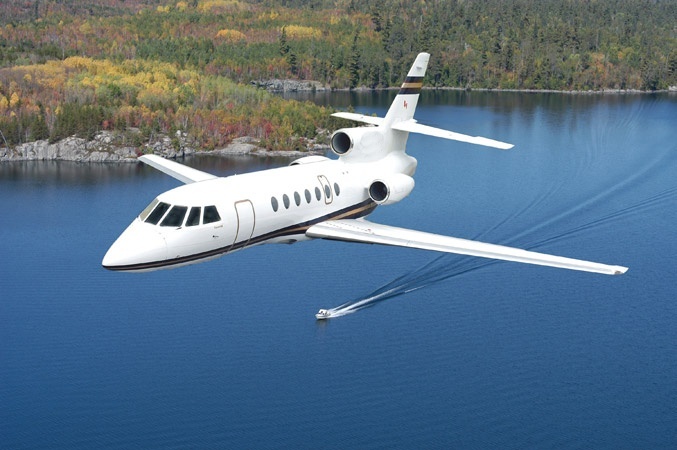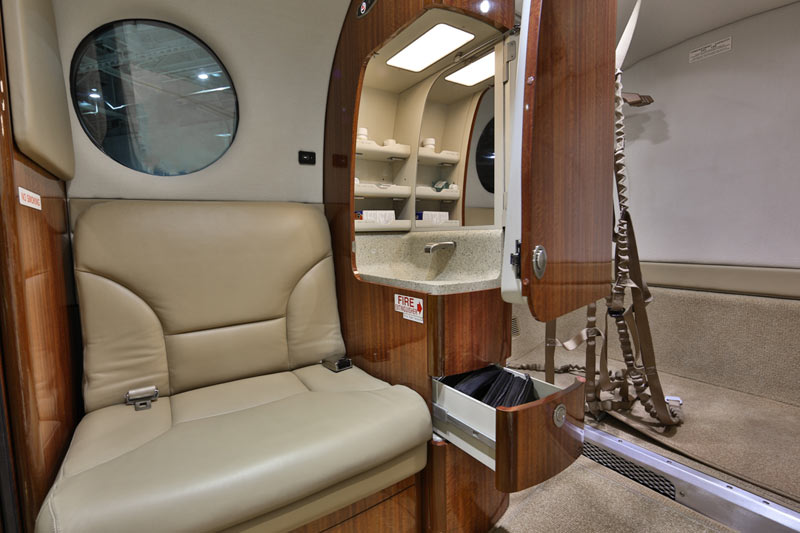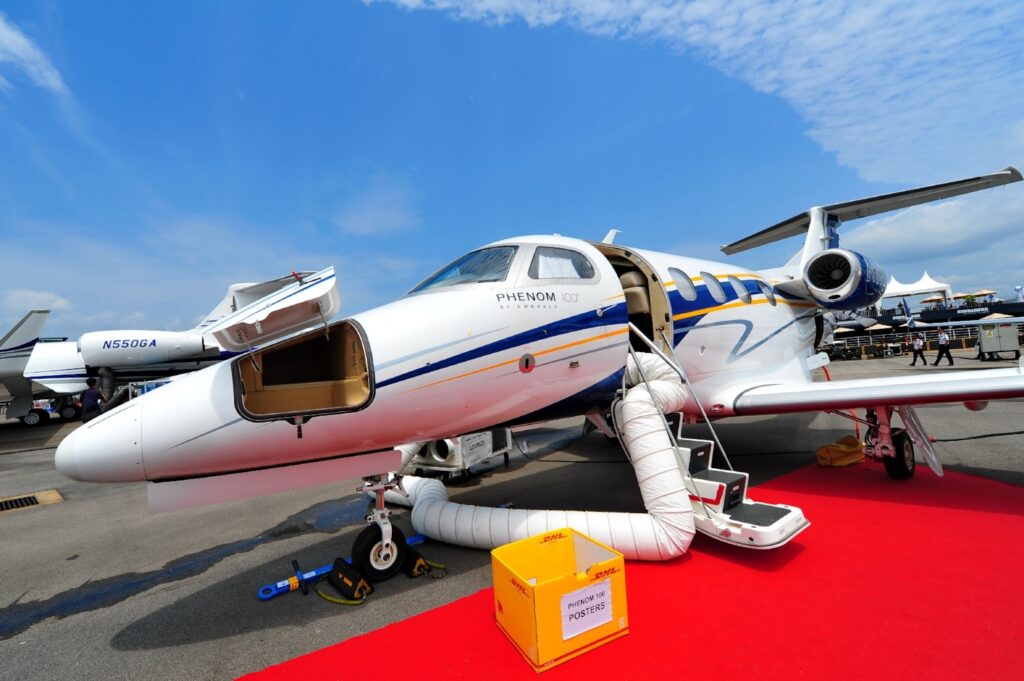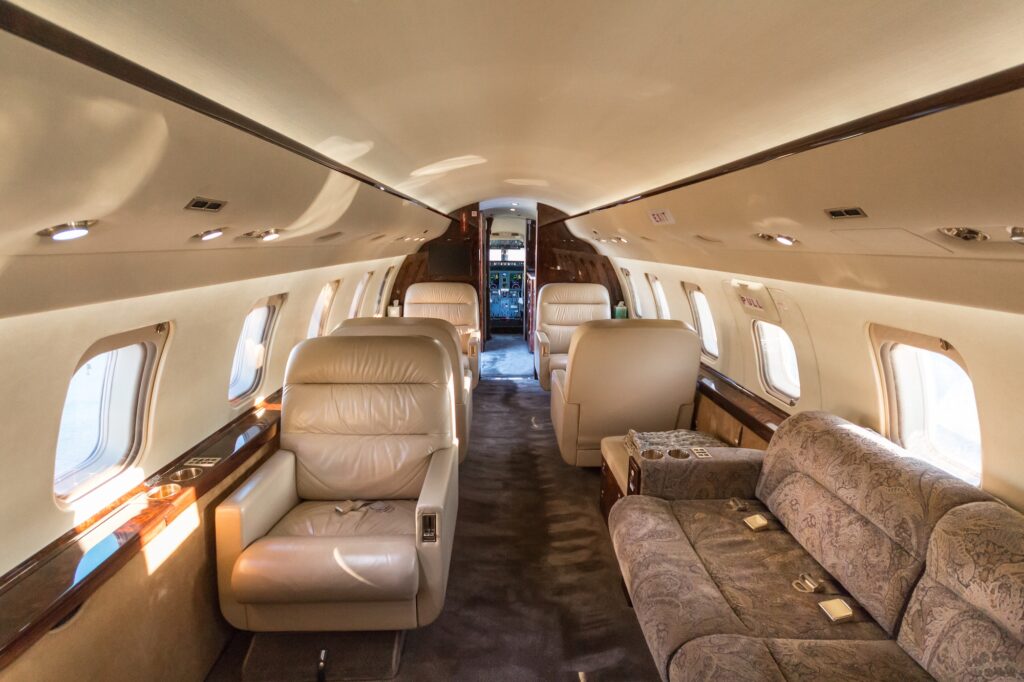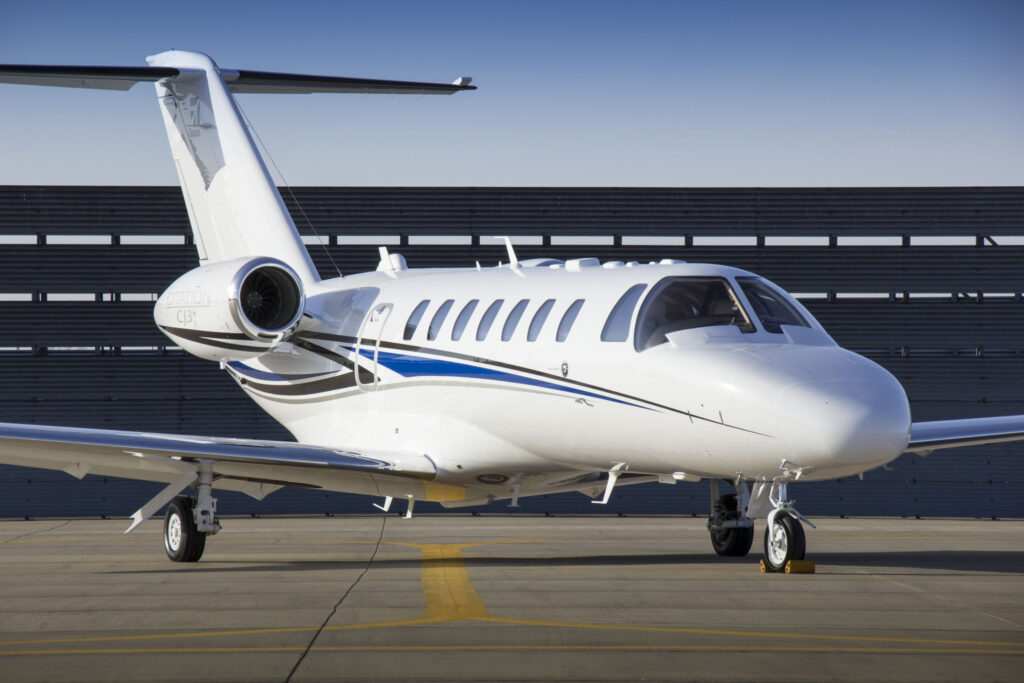Falcon 50
The Falcon 50, first delivered in 1980, was Dassault’s first trijet, featuring a third engine on top of the fuselage that makes it easy to distinguish on the tarmac. The Falcon 50 has the same fuselage cross-section as the Falcon 20, but is otherwise a completely new aircraft with improved aerodynamics and a more advanced wing design. Dassault also created the Falcon 50EX, featuring upgraded engines, a standard APU (as opposed to an optional APU on the original), changes to the rudder control system, and improved avionics. A retrofitting of the original Falcon 50 with the engines from the 50EX, but not the extra bells and whistles, may also be available, known as the Falcon 50-40.
The original Falcon 50, equipped with three Honeywell TFE 731-3-1C engines, has a normal cruise speed of 430 knots, a range of 3,147 nautical miles, a climb rate of 2,176 feet per minute, and requires 4,875 feet of runway to takeoff and 2,673 to land. The Falcon 50EX, equipped with three Honeywell TFE 731-40 engines, has a normal cruise speed of 459 knots, a range of 3,388 nautical miles, a climb rate of 3,515 feet per minute, and requires 4,875 feet of runway to takeoff and 2,673 to land. The Falcon 50-40, equipped with the same TFE 731-40 engines as the 50EX, has a normal cruise speed of 459 knots, a range of 3,260 nautical miles, a climb rate of 2,176 feet per minute, and requires 4,768 feet of runway to takeoff and 2,673 to land.
Falcon 100
In 1983, Dassault introduced to the market the twin-engine Falcon 100, which was designed to replace Dassault’s first light jet, the Falcon 10. The Falcon 100 is nearly identical, but comes with an increased takeoff weight, a larger luggage compartment, an additional cabin window, and an upgraded glass cockpit featuring optional EFIS capabilities. In fact, the Falcon 100 was the first certified private aircraft to use EFIS-technology and color screens in its cockpit.
The Falcon 100, equipped with two Honeywell TFE 731-2-1C engines, performs similarly to the 10, with a normal cruise speed of 459 knots, a range of 1,475 nautical miles, a climb rate of 4,600 feet per minute. It requires 4,339 feet of runway to takeoff and 2,578 to land.
Falcon 200
Dassault also introduced the Falcon 200 in 1983 as a redesign of the midsize Falcon 20. The Falcon 200 comes equipped with two Garrett ATF3-6A-4C engines, as opposed to the GE CF700s found on the Falcon 20. The Falcon 200 has an improved cruise speed, range, fuel capacity, and cabin comfort. The cockpit on the Falcon 200 is more modern, as well, making it more comparable to the Falcon 50 than the 20. It also has a redesigned wing, which aids its shorter runway requirements.
The Falcon 200 has a normal cruise speed of 429 knots, a range of 2,204 nautical miles, a climb rate of 3,065 feet per minute, and requires 5,265 feet of runway to takeoff and 2,864 to land.
[ulp id=’BE6pmlq8yQI913DS’]

